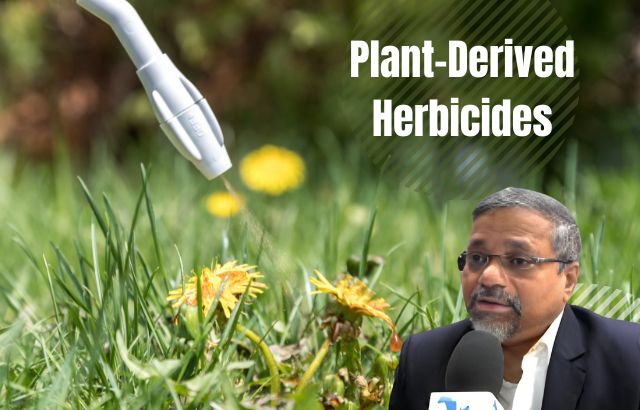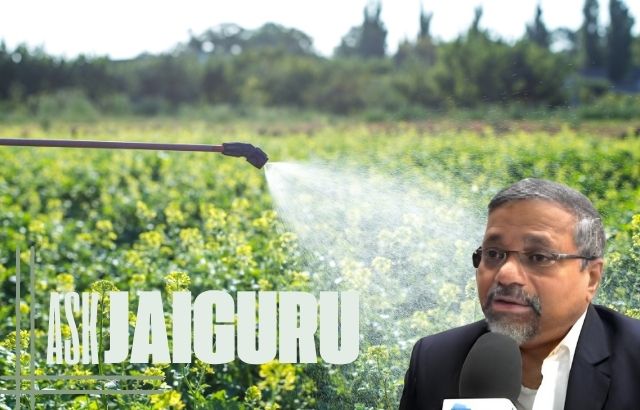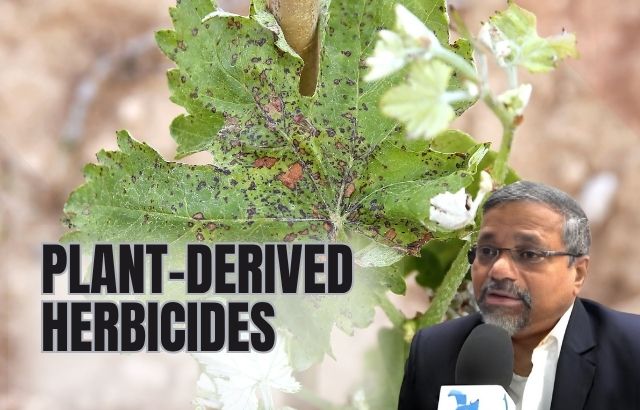In the ever-evolving world of agriculture, success is often synonymous with innovation, but the path to that success is rarely straightforward. For those pioneering new technologies in plant-derived herbicides and bioherbicides, the journey can be fraught with challenges. Yet, as with many breakthroughs in history, it’s the mistakes and the learning from failures that pave the way for true advancement.
The Rise of Plant-Derived Herbicides & Bioherbicides

The global agricultural sector has traditionally relied on synthetic herbicides to manage weeds, but growing concerns about the environment, human health, and biodiversity have led to an increased interest in plant-derived alternatives. Enter plant-derived herbicides and bioherbicides: a natural, often safer, and more sustainable approach to weed management.
While chemical herbicides have done their job, they come with a heavy environmental and health price. Overuse has led to herbicide resistance, soil degradation, and harm to beneficial insects and wildlife. Bioherbicides, which are often derived from natural plant sources, offer a promising solution—leveraging nature’s own defense mechanisms to control weeds without the harmful side effects of conventional chemicals.
However, this promising field hasn’t been without its missteps and detours. The road to developing effective and safe plant-derived herbicides and bioherbicides has been riddled with errors, but it’s through these mistakes that the industry has grown stronger, more innovative, and more sustainable.
Mistakes as Stepping Stones to Innovation
One of the leading figures in this field, Jaiguru Kadam, has been a pivotal contributor to the development of bioherbicides derived from indigenous plants. Kadam’s journey, filled with trial, error, and persistence, exemplifies how failures in the development of plant-based solutions have led to breakthroughs. From early failures in identifying the right plant compounds to managing production scalability, the journey of developing bioherbicides has been far from easy.
Real-World Examples of Mistakes Leading to Success
- The Case of Allelopathy in Plants
Allelopathy refers to the chemical interactions between plants, where one plant inhibits the growth of another. Early studies of allelopathy focused on its potential as a natural herbicide, but initial attempts to harness it were disappointing. The compounds that showed promise in the lab often didn’t have the same effects in real-world agricultural environments. However, after refining extraction methods and understanding how specific environmental conditions affected the compounds’ potency, researchers, including Jaiguru Kadam’s team, were able to isolate and improve the efficacy of certain compounds from plants like Eucalyptus and Black Walnut. - Bioherbicides from Fungal Pathogens
In the 1990s, research into bioherbicides derived from natural fungi also hit roadblocks. Some fungal strains, like Fusarium and Trichoderma, showed potential for weed control, but they often lacked consistency or had issues with viability in different soil types. It wasn’t until researchers acknowledged the need for better biocontrol strains and refined cultivation techniques that they were able to scale up production. Jaiguru Kadam’s work with fungal bioherbicides helped address these issues by experimenting with various conditions under which fungal spores could be grown and preserved effectively for use in the field. - The Missteps with Neem-Based Herbicides
Neem, long known for its pesticidal properties, became a major contender for bioherbicide development. However, early efforts to use neem oil as a standalone herbicide were ineffective, as the chemical properties that worked as an insecticide didn’t translate well to weed control. Mistakes like these, however, led to the discovery that neem works better when paired with other natural compounds or used as part of a larger integrated weed management strategy. This adjustment helped pave the way for current formulations of neem-based bioherbicides used in organic farming.
Interesting data: Success Through Learning

To further understand the impact of plant-derived herbicides and bioherbicides, we can look at data gathered from industry studies and the work of experts like Jaiguru Kadam. For instance, trials conducted by Kadam’s team on Eucalyptus globulus (Tasmanian Blue Gum) revealed:
- Effectiveness: Eucalyptus oil showed a 75% efficacy in controlling broadleaf weeds and grasses when applied in the correct concentration and environmental conditions.
- Environmental Impact: Unlike synthetic herbicides, Eucalyptus-based bioherbicides had a minimal impact on soil health, maintaining key microbial populations crucial for healthy soil ecosystems.
- Cost-Effectiveness: After several years of optimizing the production process, the cost of producing Eucalyptus-based herbicides decreased by 45%, making it more accessible for organic farmers.
These findings are a direct result of learning from previous trials, refining methods, and overcoming earlier setbacks.
FAQs about Plant-Derived Herbicides and Bioherbicides

Q1: How do plant-derived herbicides work?
Plant-derived herbicides generally work by releasing allelopathic compounds that inhibit weed growth or germination. These compounds can disrupt the plants’ ability to absorb nutrients, water, or sunlight. For example, Eucalyptus and Black Walnut produce substances that can hinder seed germination in nearby plants.
Q2: Are bioherbicides safer than chemical herbicides?
Yes, bioherbicides derived from plants or natural organisms tend to be safer for the environment and human health compared to synthetic herbicides. They are less likely to harm non-target species, like beneficial insects, pollinators, or soil organisms, and often degrade more quickly in the environment.
Q3: Can bioherbicides be as effective as chemical herbicides?
While bioherbicides may not always match the speed or broad-spectrum activity of chemical herbicides, they can be just as effective, especially when used in conjunction with integrated pest management (IPM) systems. Research into specific plant-derived compounds continues to enhance their efficacy.
Q4: Why are plant-derived herbicides more sustainable?
Plant-derived herbicides are typically biodegradable, meaning they don’t persist in the environment as long as synthetic chemicals. This reduces the risk of long-term soil degradation, water contamination, and non-target species damage. Additionally, many bioherbicides come from renewable resources, unlike petroleum-based chemicals.
Q5: What are the challenges in developing bioherbicides?
Developing bioherbicides comes with several challenges, including:
- Inconsistent efficacy: The compounds may work in lab settings but fail in field conditions due to environmental factors.
- Production scalability: Growing and extracting natural compounds in large quantities for commercial use can be costly and complex.
- Regulatory approval: Obtaining approval from agricultural authorities for new bioherbicide products can be a long and expensive process.
Looking to the Future

Despite the hurdles, the potential for plant-derived herbicides and bioherbicides is enormous. Through innovation and learning from previous mistakes, experts like Jaiguru Kadam are helping to shape a future where agriculture can thrive without compromising the planet’s health. The key is persistence—the belief that every failure is just another step toward a more sustainable, effective solution.
In the world of bioherbicides, the pursuit of success is not about avoiding mistakes, but learning from them. As the science of plant-based herbicides evolves, each misstep brings the industry closer to achieving a harmonious balance between agriculture and the environment—one plant-derived solution at a time.












